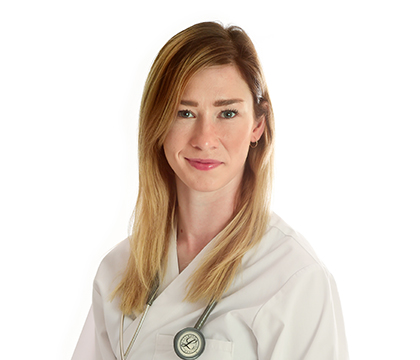
Alberta student’s career takes flight
Thanks to her father's allergies to cats and dogs, Alice Liboiron grew up with an unconventional array of family pets that may have sparked her enduring interest in wildlife — particularly birds.
By Lynne Gunville"I was only allowed small caged animals, so we kept finches, guinea pigs, hamsters, anoles, salamanders and mice," says Liboiron. "Before the existence of rescue societies like the Calgary Wildlife Rehabilitation Society (CWRS), it was also common for us to raise one or two wild songbirds every year after they'd fallen out of their nests in our yard."
Although animals were a huge part of Liboiron's young life, she didn't consider a career in veterinary medicine until she was 21 and working at an administrative job in her hometown of Calgary, Alta.
That's when Liboiron realized that she'd never truly enjoy a career unless it involved animals. After that moment of clarity, she began taking classes to upgrade her math and science skills – her first step toward a veterinary career.
Once she became a full-time student, Liboiron signed up for research jobs to help pay the bills and provide experience with ecological and wildlife sciences.
"One of my research mentors was an ornithologist, and many of the classes that I took and projects that I developed with her had a strong focus on wildlife monitoring, particularly of passerine species," she says.
Liboiron joined a research team that designed wildlife monitoring applications. She was one of the prime testers for the applications and went on to design a monitoring application called Birdbox – a system for monitoring bluebird trails using a Geographic Information System (GIS).
She also participated in research aimed at increasing citizen engagement with natural areas by using GIS applications to create maps that would help direct trail development and would be useful for assessing the ecosystem health of Calgary's urban natural areas.
Liboiron was inspired by those experiences along with her volunteer work for the CWRS and for other agencies aimed at wildlife conservation and environmental education. She resolved to make wildlife medicine, ecosystem health and stewardship an important focus in her career.
Now that she's a first-year student in the four-year Doctor of Veterinary Medicine (DVM) program, Liboiron is a step closer to achieving her goals. She and her 77 classmates received an official welcome to the WCVM and to the veterinary profession on Friday, Sept. 23, during a white coat ceremony in Saskatoon, Sask.
Liboiron is grateful for her background experiences that have given her a well-rounded understanding of the factors that affect humans and animals, whether they're in a bonded, companion relationship or separated by a fence in a park.
"The concept of One Health is one that I understand quite well because I've worked with scientists, veterinarians, wildlife advocates and pet owners," she says. "All of these groups of people contribute to the interactions between human health, animal welfare and robust environments."
Once she completes her degree, Liboiron is hoping to become involved in work at the University of Saskatchewan's Facility for Applied Avian Research. She would also like to continue working with groups such as the CWRS.
"I'd like to practise medicine that can contribute to healthier, intact ecosystems either through wildlife care or research that could impact management practices or public health."
